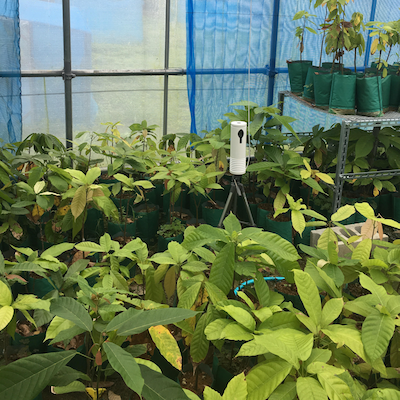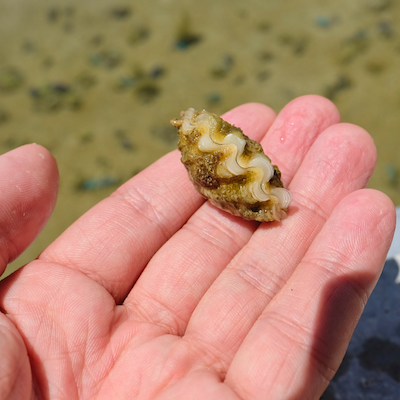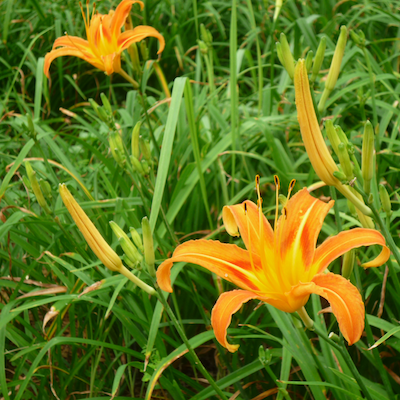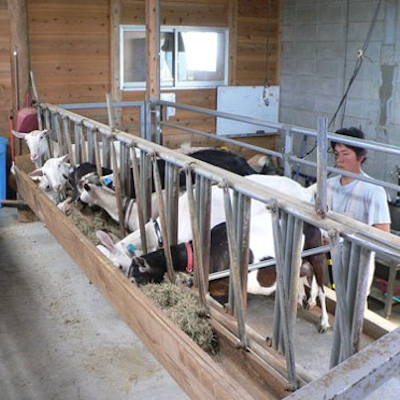Ryukyu Forum 2017
Ryukyu Forum 2017 of the Association of Hyperdisciplinarity
Encountering Technology that Transforms Production Sites
August 25 Ryukyu Forum
The symposium will be centered on symposiums and panel discussions on the themes of cacao cultivation, which is in need of new production sites due to declining production, livestock farming, which can generate profits, and aquaculture technology for both marine and land-based settings, as well as poster presentations that will add new perspectives to primary industries.
Schedule
13:00 – 13:10
Opening Remarks
13:10 – 13:30
Keynote Speech: Creating the Food Production Technology of the Future
[Speaker]
Mr. Takafumi Goto
Kagoshima University Faculty of Academic Research Faculty of Agriculture, Fisheries and Veterinary Medicine Faculty of Agriculture, Fisheries and Veterinary Medicine Professor
During his tenure at Kyushu University, he established a new technology to produce fat cattle on a grass diet instead of grain feed by imprinting metabolic physiology during the early growth period. This technology is now being developed as "Q beef.
13:30 – 14:30
Panel Discussion 1)
Developing technology to make Japan a tropical plant production area
The panelists will discuss the future production of tropical and subtropical crops in Japan through the introduction of technologies such as waste heat utilization and sensing technology, while producers and researchers of tropical fruit trees such as cacao and mango will present their production challenges and business potential.
[Panelist 1]
Representative Director, Local Landscape Co.
Mr. KAWAI Kiro
Under the slogan of "making Okinawa cacao a global brand through regional cooperation," the company started cacao cultivation in Yanbaru, northern Okinawa, which is extremely rare in Japan. The company aims to increase communication between the region and the city through cacao, and to create a broad-based Okinawan cacao industry that will lead to regional development through the production of chocolate combined with Okinawan ingredients.
[Panelist 2]
Lecturer, Faculty of Regional Resource Creation, University of Miyazaki
Mr. Tomohiro Kondo
He has been studying the effects of different growing environments and cultivation methods on the physiological and biological responses of plants and fruit quality using tropical fruits. In particular, he has studied the effect of fertilization on fruit quality, especially citric acid content, of passion fruit.
[Panelist 3]
Professor, Intelligent Information Course, Department of Engineering, Faculty of Engineering, University of the Ryukyus
Mr. Shiro Tamaki
Aiming to improve the quality and productivity of tropical fruits produced in Okinawa Prefecture, we are developing a fruit production system based on ICT & IoT. In particular, the key to quality improvement is photosynthetic activation, and they are aiming to establish optimal CO2 application and LED supplemental light technology.
[Panelist 4]
Director, Agri-Garage Research Institute, Liverness, Inc.
Yosuke Miyauchi
In graduate school, he went to Xinjiang Uygur Autonomous Region to establish soybean cultivation technology with local Chinese researchers. At RIVANES, he established the Agri-Garage Research Institute, whose mission is to maximize the potential of plants and other producers, and is involved not only in original research but also in joint research with universities, companies, and ventures.
14:40 – 15:50
Symposium ①.
Cutting-edge technology to create a profitable livestock industry
Livestock-related technologies that promote improved cost ratios and increase profitability will be discussed, including technologies for raising beef cattle with good quality meat from grass alone, developing cost-saving feeds that utilize food residues, and technologies to improve fertilization rates.
Examples of cutting-edge efforts by researchers and producers will be gathered.
[speaker 1].
Associate Professor, Department of Animal Production Science, Faculty of Agriculture, University of the Ryukyus
Mr. Yoshimi Imura
During his student days, he conducted research on fermentation of warm-season grass silage, and during his time at Kagoshima University, he conducted research on pig free-range feeding and eco-feed for cattle. Currently, at the University of the Ryukyus, he is conducting research on the development of eco-feed for pigs made from prefectural food production by-products (Awamori lees, Tofu lees, beer lees, etc.).
[speaker 2].
Assistant Professor, Laboratory of Animal Reproduction, Graduate School of Biosphere Science, Hiroshima University
Ms. Yumi Hoshino
He is working to elucidate the characteristics of oocytes and fertilized embryos with high fertilization and developmental potential at the molecular level, and to develop cell sorting technology based on this knowledge. We are also challenging the uncryopreservation of ovaries, oocytes, and fertilized embryos. These are being developed as interdisciplinary research in collaboration with different fields, with the aim of contributing to the efficient increase in the production of high quality livestock and assisted reproductive medicine.
[Speaker 3]
Representative Director, Matsunaga Ranch Co.
Mr. Wahei Matsunaga
In addition to Matsunaga Farm, he runs two other farms, shipping 3,600 head of beef cattle and 13,500 tons of milk per year. He practices recycling-oriented agriculture by producing eco-friendly feed using food residues, providing preventive medical care by a dedicated veterinarian, joint management through investments from different industries, and selling 20,000 tons of compost annually.
15:50 – 16:10
Presentation of production issues by producers
Prior to the poster session, local producers will give a presentation on their issues and the recipients they would like to collaborate with.
16:10 – 17:10
Poster Session
17:10 – 18:20
Symposium (2)
Next-generation aquaculture technology created by entry into different fields
We will discuss how technologies from different industries can contribute to the challenges of aquaculture, inviting researchers who are conducting demonstrations using environmental control and monitoring technologies, as well as people from companies.
[speaker 1].
Associate Professor, Department of Mechanical Systems Engineering, Faculty of Engineering, University of the Ryukyus
Mr. Izuru Senanami
The company aims to build a carbon-recycling society in which CO2 is utilized as a resource for seaweed cultivation. As a key technology, CO2 is artificially dissolved in seawater and fed to seaweeds to dramatically increase the productivity of algae.
[speaker 2].
Manager, Fisheries Group, Planning and Sales Department, Tomoe Shokai Co.
Atsushi Sakai
Since 2012, he has been in charge of high-concentration oxygen dissolution equipment at Tomoe Shokai. Since 2015, he has been working on tiger prawn aquaculture trials utilizing this equipment in Hyogo Prefecture. Since 2016, he has also been working to expand the scale of tiger prawn production at the Itama Aquaculture Center in Okinawa Prefecture.
[Speaker 3]
Senior Researcher, Market Development Promotion Office, Research Department, Technical Research Institute, Furuno Electric Co.
Mr. Takashi Imasaka
After graduating from the Department of Physics, Faculty of Science, Kwansei Gakuin University, he joined Furuno Electric Co. For about 20 years, he was engaged in the development of underwater ultrasonic equipment for fishing boats and merchant ships that applied the Doppler effect. Later, he worked on research planning and research on autopilots that automate ship's rudders. Currently, he is promoting the development of new markets while utilizing open innovation.
August 24: Tour of production sites
Okinawa has a subtropical zone, which is a limited production site in Japan, and we believe there is potential for new industries there.
This tour will visit sites in the agriculture, forestry, and fisheries industries that are engaged in production unique to Okinawa. In the agricultural industry, the tour will visit farmers who grow cacao, which has recently begun to be cultivated in subtropical regions of Japan, and kwanso, which has been cultivated in Okinawa for centuries as a food and has been reported to improve sleep in recent years. In the fisheries industry, they will visit the production site of edible giant clam, which is still not widely distributed outside Okinawa, and in the livestock industry, they will visit the breeding sites of beef cattle and dairy goats. In each of these fields, the participants will consider what kind of possibilities for primary industry can be opened up by adding technology.
[Number of participants] 30
Production Site Tour Schedule (August 24)
7:30 – 8:30
Cacao plantation / Local landscape
*Because of the early morning, the event is held with those who wish to attend.

[Point]
Visited a site that aims to produce Okinawan cacao by establishing a unique cultivation method.
This is a rare opportunity to learn about initiatives that have begun in Okinawa Prefecture, which is located outside the 20° north-south axis where cacao cultivation is flourishing.
9:30 – 10:30
Shako Mussel Farm

[Point]
Visiting the site of cultivation of the edible giant clam, which is rarely distributed outside of Okinawa. The tour will provide participants with an opportunity to learn about the characteristics of the giant clam and consider its business possibilities.
11:00 – 12:00
Kwanso Cultivation Farm / Zamami Farm

[Point]
Visit a farm where Kwanso (Kwanso) has been cultivated for food in Okinawa since ancient times, and its ingredient oxypinatanin has recently been reported to have a sleep-improving effect.
12:30 – 13:00
lunch
13:00 – 14:00
Beef cattle fattening farm / Motobu Ranch

[Point]
Visit Motobu Ranch, which raises nearly 2,000 head of beef cattle using a unique fattening method.
New initiatives are also being taken, such as the development of original fermented feed.
16:00 – 17:00
Dairy Goat Farm / Hagoromo Ranch

[Point]
Visit Hagoromo Ranch, the only farm in Okinawa that raises dairy goats.
A valuable opportunity to understand the potential of goats by learning about the development of goat breeds and feed to produce quality goat milk.

